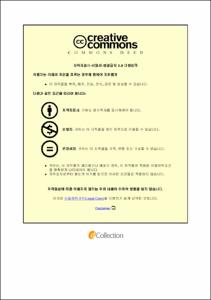연근 형태 TiO2를 이용한 리튬이온전지 음극 평가
- Abstract
- As an alternative of the graphite-based anode in lithium ion batteries (LIBs), the TiO2-based anode has drawn attention with its stability and long operation life especially in the field of electric vehicles (EVs). Although the lithium titanate (LTO, Li4Ti5O12) anode is commercial, there have been constant needs to improve the anode capacity with TiO2-based materials because they have much higher theoretical capacities compared to LTO. In this study, a lotus-root shaped TiO2 (LR TiO2) material was synthesized using a cetyltrimethylammonium hydroxide (CTAOH) and bromide template and applied as a anode material for LIB with expectancy to have large pores for lithium insertion and thus show better electrical property. Coin cell tests were carried out with the anodes prepared from LTO, nano-sized TiO2 powder (known as P25), and LR TiO2 for comparison by charging and discharging. And then, we were to investigate the phase-dependent performance of LR-TiO2 as an anode material whose crystalline phase was controlled by varying the calcination temperature of 450, 550, 700 °C. SEM measurements showed the unchanged morphological characteristics of columnar micro-channels favorable for Li+ supply regardless of the calcination temperature. However, anatase- and rutile-rich phases were confirmed by XRD measurements for LR-TiO2 calcined at 450 (LR-TiO2-450) and 700 °C (LR-TiO2-700), respectively. The capacity of the LR-TiO2-450 anode was 120 mAh/g and decreased with the increase of calcination temperature. It is basically attributed to a better electrical conductivity of anatase to rutile and loss of surface area (or accommodation sites) due to a poor staking of rod-like rutile grains compared to spherical anatase ones. Unfortunately, we could not specify the expected synergistic effect of mixed phases in LR-TiO2-550 because the resistance of electron transfer is negligible compared to that of Li+ transfer or insertion based on EIS measurements.
- Issued Date
- 2020
- Awarded Date
- 2020. 2
- Type
- Dissertation
- Publisher
- 부경대학교
- Affiliation
- 부경대학교 대학원
- Department
- 대학원 화학융합공학부
- Advisor
- 원용선
- Table Of Contents
- 1. 서 론 1
2. 이 론 5
2.1. 리튬이온전지의 개요 5
2.2. 리튬이온전지의 구성 요소 5
2.2.1 활물질 6
2.2.2 전해질 6
2.2.3 분리막 7
2.2.4 바인더 7
2.2.5 도전재 8
2.3. 측정 9
2.3.1 충방전 9
2.3.1.1 정전류 시험법 9
2.3.1.2 정전압 시험법 9
2.3.2 EIS(Electrochemical Impedance spectroscopy) 10
2.3.3 순환전압주사법(Cyclic Voltammetry) 11
2.3.4 주사전자 현미경(Scanning Electron Microscopy, SEM) 12
3. 실험 14
3.1. 실험 재료 14
3.2. 실험 방법 14
3.2.1 Preparation of LR TiO2 14
3.2.2 Preparation of coin cell 15
3.2.3 Measurements 15
4. 결과 및 고찰 17
4.1 입자 크기에 따른 성능 비교 17
4.2 TiO2의 결정 상에 따른 성능 비교 29
5. 결 론 44
6. 참고문헌 46
- Degree
- Master
- Files in This Item:
-
-
Download
 연근 형태 TiO2를 이용한 리튬이온전지 음극 평가.pdf
기타 데이터 / 1.92 MB / Adobe PDF
연근 형태 TiO2를 이용한 리튬이온전지 음극 평가.pdf
기타 데이터 / 1.92 MB / Adobe PDF
-
Items in Repository are protected by copyright, with all rights reserved, unless otherwise indicated.